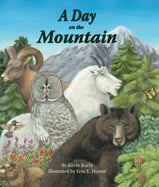Alignment to Standards for KS

| Grade | Number | Standard |
|---|---|---|
| 4 | SS-GEO.4-3.1.1. | applies geographic tools, including grid systems, symbols, legends, scales, and a compass rose to construct and interpret maps. |
| 4 | SS-GEO.4-3.1.4. | identifies major landforms and bodies of water in regions of the United States (e.g., mountains, plains, islands, peninsulas, rivers, oceans). |
| 4 | SS-GEO.4-3.3.1. | physical components of Earthês atmosphere, land, water, biomes (e.g., temperature, precipitation, wind, climate, mountains, plains, islands, oceans, lakes, rivers, aquifers, plants, animals, habitats). |
| 4 | SS-GEO.4-3.3.3. | functions and relationships of ecosystems in Kansas and across the United States (e.g., food chains, water, link between flora and fauna and the environment). |
| 4-Mar | SC-3-4.3.1 | The student will develop knowledge of organisms in their environment. |
| 4-Mar | SC-3-4.3.1.1. | compare/contrast how similar functions are served by different structural characteristics. |
| 4-Mar | SC-3-4.3.1.2. | compares basic needs of different organisms in their environment. |
| K-2 | SC-K-2.3. | The student will begin to develop an understanding of biological concepts. |
| K-2 | SC-K-2.3.1. | The student will develop an understanding of the characteristics of living things. |
| K-2 | SC-K-2.3.1.1. | discusses that organisms live only in environments in which their needs can be met. |
| K-2 | SC-K-2.3.1.3. | observes living things in various environments. |
| K-2 | SC-K-2.3.1.4. | examines the structures/parts of living things. |
| K-4 | EESK-K-4-1.1.2. | identify, compare, and contrast distinctive landforms, both within their region and other areas of the United States. |
| K-4 | EESK-K-4-2.1.1. | identify similarities and differences among a wide variety of living organisms. |
| K-4 | EESK-K-4-2.2.2. | identify observable characteristics that help organisms survive. |